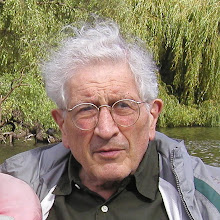http://www.spectator.co.uk/the-magazine/features/5186153/the-space-age-isnt-over-it-hasnt-yet-begun.thtml

It is, for the most part, unconvincing. I am sure the views for Richard Branson's 3, 000 millionaire travellers will be amazing and their after dinner conversations on return much enhanced; but they will in no manner be "new astronauts" (astro means a star and they will not have gone significantly nearer any stars than I will have done; we should have a further contempt for the term 'cosmonaut', as nobody, even if they venture to Mars, will have been anywhere near the cosmos which begins at the nearest star - is that Alpha Centauri - four light years away ...). Many of the recently developed applications of spacecraft have been useful, though we could have managed without and quite probably spent the money better on earth.
There are at least two potentially earth-saving applications for which we do have to reach out into the solar system. One, which Wakefield does mention, though without discussing it enough, is the need for a giant device which will not just detect a possible cometary collision with earth, but actually somehow ward it off.
A second device which Wakefield also mentions, but without identifying how it might best be used, consists of panels to collect solar energy and in her version beam it back to earth. She does not say where the beam will fall, whether it may do significant damage on the way, or whether the track of the beam will be precisely controllable, and how the energy will be collected, but no doubt these difficulties can be overcome.
Surely, though, what would be useful, if we are not yet wholly convinced by the non-global-warming lobby, is a means by which to cast large shadows, in a controlled manner, upon earth; a Geostationary Parasol. The object would be to lessen the warming which we have stumbled into by reducing earth's reflective heat loss. I have no knowledge of astrophysics but my question is, whether a huge solar panel much further away from the moon (and thus closer to the sun? – but thereby casting a wider shadow), and between sun and earth like an eclipse, could be constructed to collect enough solar energy to transform into stabilising propulsion for itself, while casting a substantial cooling shadow on earth.
Who would finance and build such a device? Who would control its shade? These challenges in socio political "engineering" are perhaps as intractable as the engineering ones involved in setting forth and physically controlling such a device. I do not believe we should hope that such truly useful applications will arise serendipitously on the back of funfairs in the sky.

1 comment:
So the nearest star is alpha century?
Typical - we never rcognise those closest to us.
Post a Comment